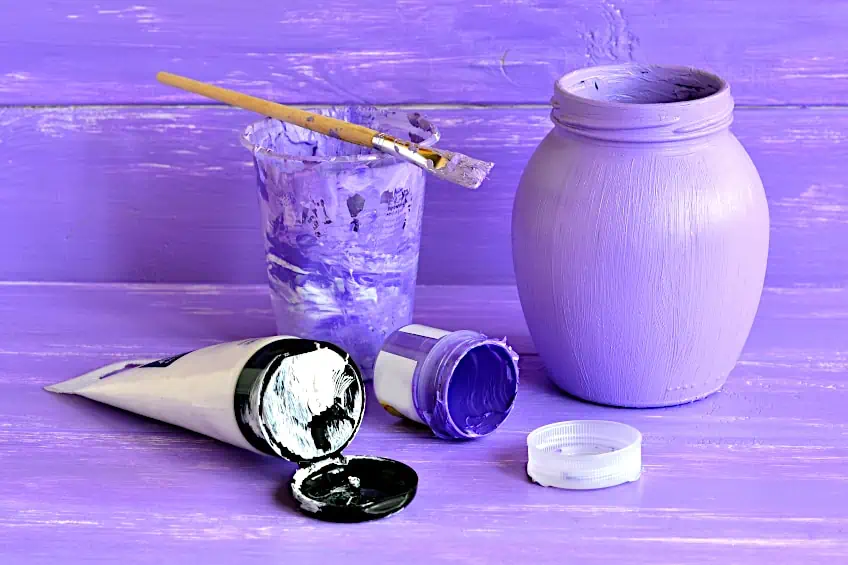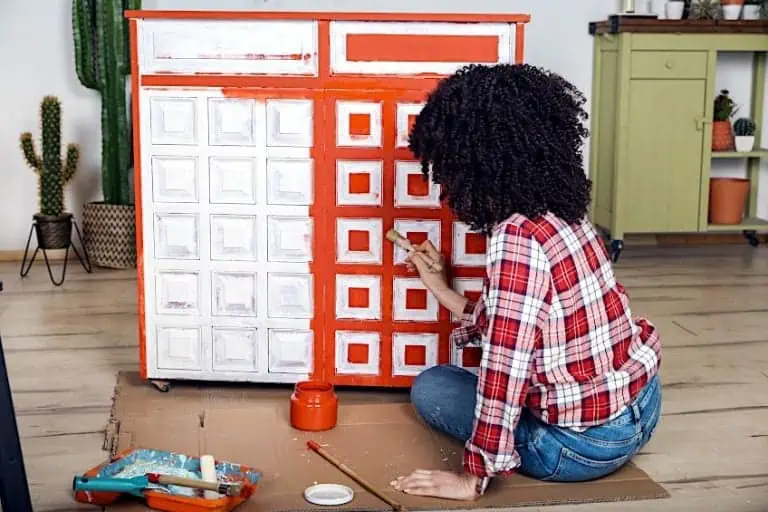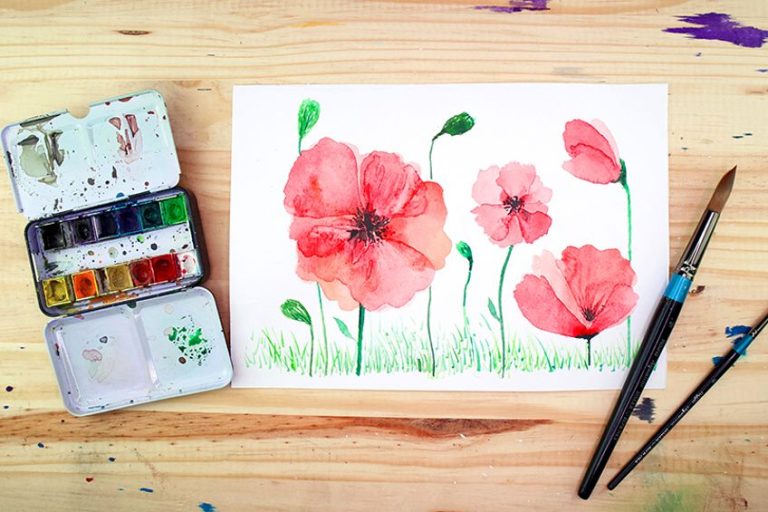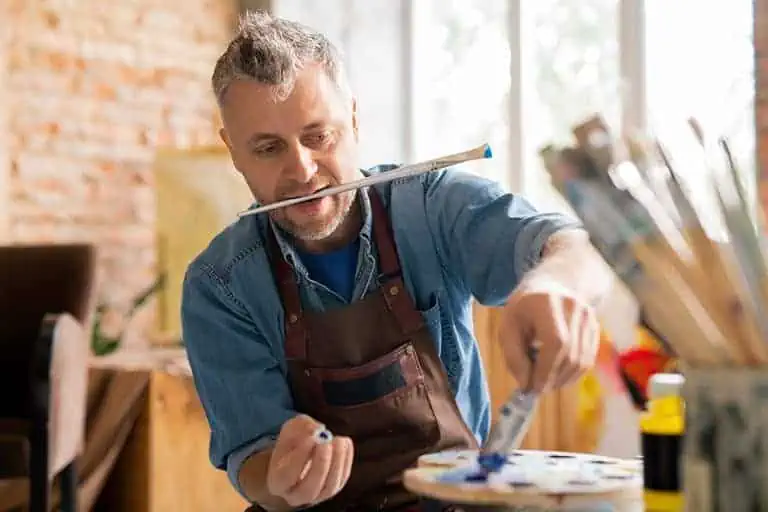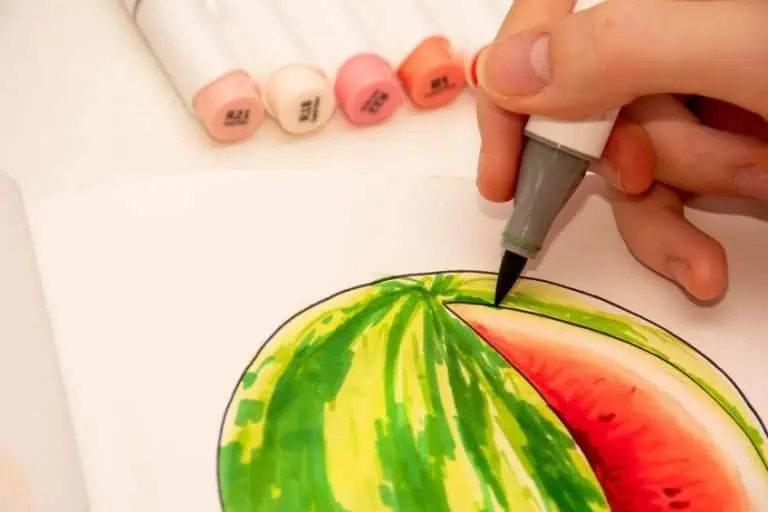How to Paint a Vase – Tips for Decorating Ornamental Glassware
This post may contain affiliate links. We may earn a small commission from purchases made through them, at no additional cost to you.
If your vases are looking a bit outdated, you might be considering buying some new ones. Before you do, you should know that glass vases can be painted, which breathes life back into what could be outdated designs. Painting vases is quite easy, and we’ve prepared a short tutorial detailing how to paint a vase, what tools you will need to do it, and how to prepare your workspace for the task ahead.
Table of Contents
How to Paint a Vase
Vases can be great centerpieces, or encompassing decorations for a space. To ensure you know how to paint your vases correctly, we have created a short walkthrough showing you the tools that you will need as well as how to go about it. When working with paints and solvents, always ensure your workspace is prepared and that you are wearing appropriate protective gear. Here are some things you’ll need:
- A glass workpiece
- Spray paint for glass (or artist paints)
- Paint markers (optional)
- Painter’s tape
- Soap and water
- A clean cloth
- A drop cloth
- A dishcloth
- A face mask
- A set of gloves
Choose the Right Vase
The first step to painting a vase is choosing the right one for the job. While there are many glass vases out there, not all of them are capable of receiving paint due to the type of glass they are made out of or the texture of their surface. What is the best type of glass vase for you to paint then? Well, clear glass vases are arguably the best choice for beginners.
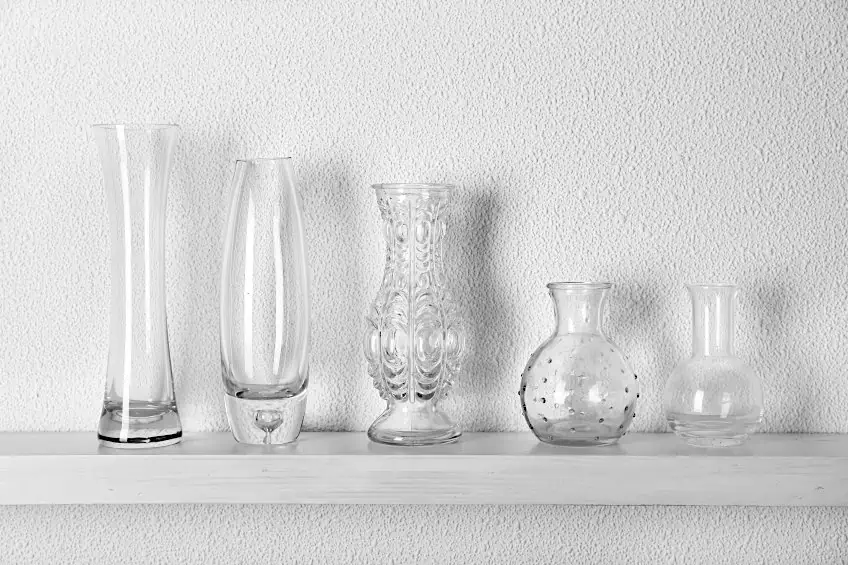
Untextured clear glass vases will allow your paint to adhere easily. This is because you can create enough adhesion to the surface using the correct paint types, but with other glass types, this could be more challenging.
As far as size is concerned, small and medium-sized vases should be the most manageable, especially if this is your first time.
Establish Your Design
While you could simply spray your workpiece one solid color, there are many design options to choose from. You could opt for a staggered or gradient effect, or you could try color blocking or even a stencil design.
All of these are popular options that are relatively easy to pull off if you have the right tools and a bit of experience working with craft paint or spray paint.
Regardless of your design choice, you need to establish what you intend to do before you begin painting. If you are going to use stencils, establish where they will be placed, and if you are going to do color blocking or gradient painting, establish where one color ends and the other begins. Feel free to mark your design lines on your vase beforehand.
Prepare Your Workspace
Spray painting can get messy regardless of what you are spraying. To protect your workspace and anything inside it, it’s best to cover your work surface and anything else nearby using a drop cloth and then secure it with some painter’s tape. This will prevent your drop cloth from moving around while you work, which is especially important considering your vase is made of glass.
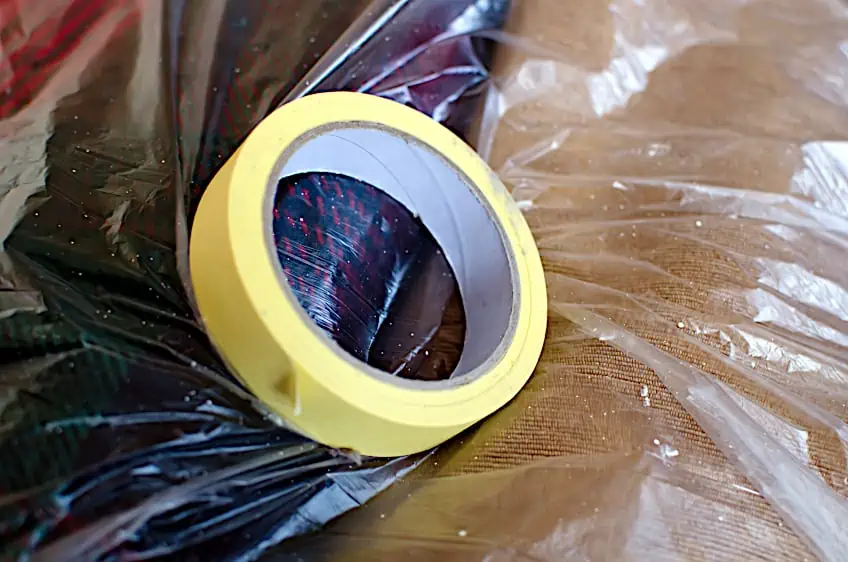
It’s best to paint your glass vase on a flat surface, which is why we recommend covering your work table with a drop cloth. If you plan on using spray paint this can get quite messy, so ensure that your drop cloth is nicely sealed against the surface of your table, especially where the vase will be situated on the table.
Clean Your Vase
Once you know exactly what you want your vase to look like, it’s time to clean the glass. While glass is a sheer surface it can pick up a lot of dust and grime over time, be it less so than textured surfaces. To clean your glass vase all you will need is to rinse it thoroughly in soapy water.
The goal is to remove the thin film of dust and oily dirt that may have built up over time.
If your vase is particularly dirty, you should see the water change color slightly, indicating that the cleaning process is working. Once you are done, use your dishcloth to dry the surface and allow the vase to air dry for a bit.
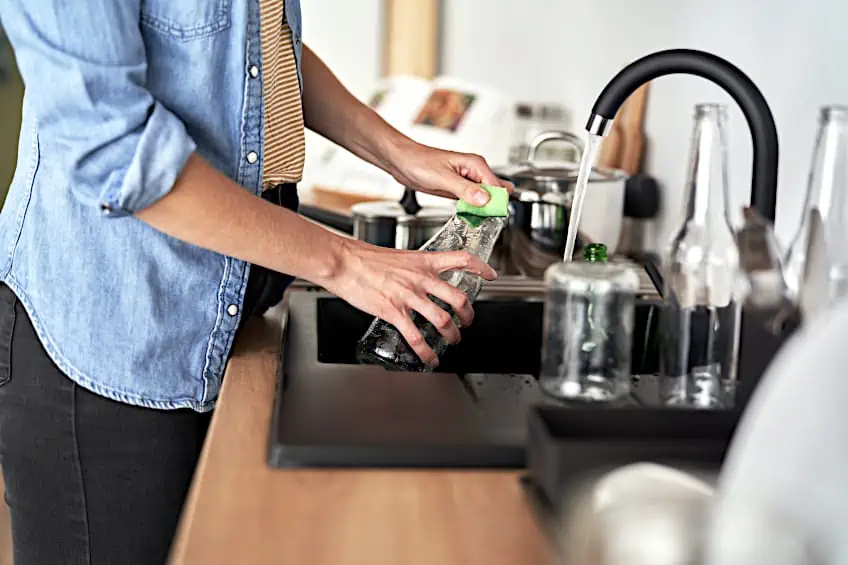
Prime Your Vase
There are a couple of ways you can go about priming a glass workpiece. The first is to use a thick white acrylic paint on the surface of your glass, applying one or two coats of the paint in succession, allowing them to dry before you apply your actual color. How effective this method is largely depends on the paint quality being applied.
The other option is to simply use paint designed for use on glass, especially if you want to retain some transparency.
If you are planning on using spray paint, then look out for a self-priming type, which means all you have to do is point and spray. These days self-priming paints are almost universally used, but if you are painting your glass by hand you might want to consider using another priming method as paint does tend to run.
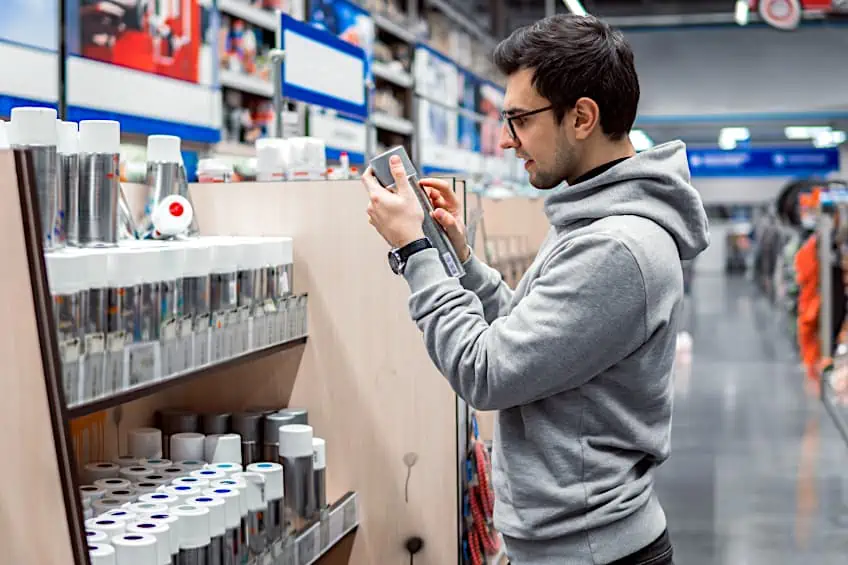
The final method is to use a dedicated glass primer. These are usually clear liquids that evaporate once applied to the glass. They can simply be applied directly to the surface of your glass vase and then rubbed across the entirety of the glass.
Ensure your workspace is well ventilated when working with glass primer as they tend to produce fumes while evaporating.
Painting Your Vase
When it comes to painting a vase there are several ways you can go about it. Each technique/method has its respective pros and cons depending on the size and shape of your vase, that is why we have provided a detailed walkthrough of the different ways you can go about painting your vase depending on your needs or preference.
Painting a Vase by Hand
If you are a DIY crafter this method might appeal to you more than using spray paint. It provides more control over how the paint is applied and is less likely to make a mess compared to spray painting.
To paint a vase you will need a paintbrush, a jar of glass paint, and of course, the vase you intend to paint.
To begin, open up your paint container and get some on your brush, ensuring you hold your brush in your dominant hand. Once you have your brush in hand, place your free hand inside the jar and expand your fingers (or make a fist) until you have a good grip on the jar. Lift the jar up to a comfortable level and begin applying your paint.
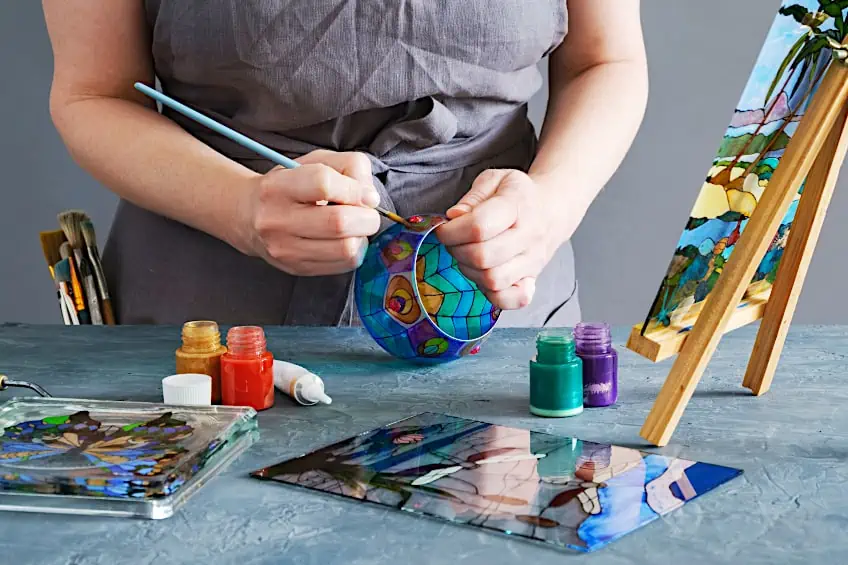
Start applying your paint along the length of the jar in strips, ensuring that each one overlaps with the next until you have complete coverage. Feel free to rotate your hand (and by extension the jar) so that you have access to more of the jar’s surface as you progress, and don’t forget to paint the bottom!
Once your jar is completely coated, allow it to dry for around 20 minutes before touching it.
That was your first coat. Once it has dried, apply an additional coat of paint following the same method mentioned above, only this time aiming for a smoother texture by minimizing brush strokes as you move along the surface. Once your second coat has been applied, allow the paint to dry and cure overnight (roughly 12 to 24 hours).
Painting a Vase Using Spray Paint
If you are wondering how to paint glass vases using a spray can, you’ll be happy to know it is far easier and far less labor-intensive than painting it by hand. Acrylic-enamel spray paint is a good option for painting glass, as it is quite thick and will adhere to the sheer surface quite well.
Remember to give you can of spray paint a good shake ensure the thorough mixing of the pigments with the binder.
Once your paint has been mixed up, insert your free hand into the vase and expand your fingers to get a good grip. Lift the vase up to a comfortable position and begin spraying the surface of the vase, making fast, even passes across the surface while rotating the vase with your other hand. Remember that even though your passes should be quick, you can rotate the vase at a speed you are comfortable with.
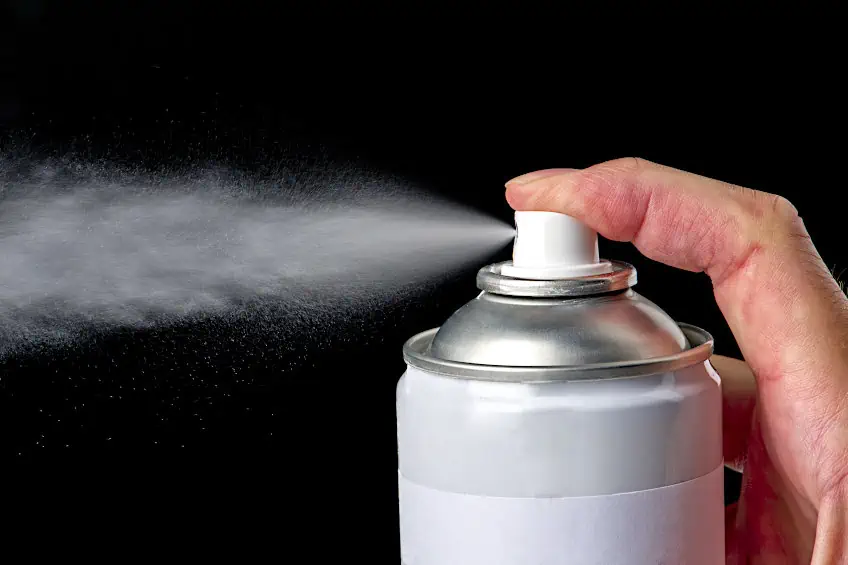
Your layers should be thin and even, as additional coats will be applied later on. Repeat this process until all of the vase’s surface has been painted and then allow your coat to dry completely according to the manufacturer’s recommended time period. Once your initial coat has dried, you can apply an additional coat in the same manner as your first one and then allow it to dry completely as well.
Painting glass can be quite different from painting other surfaces, purely because it can take a lot more coats to achieve your desired color intensity than it would with surfaces like wood or brick. That being said, apply as many coats as you’d like to achieve your desired color or degree of opacity.
Applying Sealer (Optional)
Once again, the application of sealer is optional. Some paints used on glass are extremely durable, like enamel-based paints. Plain acrylic glass paint is slightly less durable though, and might warrant the use of a good sealer. Sealers are also available in aerosolized form, and the same technique can be used to apply them.
Adding Design Elements
For most, painting a vase with solid colors or adding a gradient is enough, but for others, it might be a bit bland. Thankfully, there are many design elements you can add to your glass vase to set it apart from the competition, and they aren’t too difficult to make either. Here are a few design elements you could add to your painted glass vase.
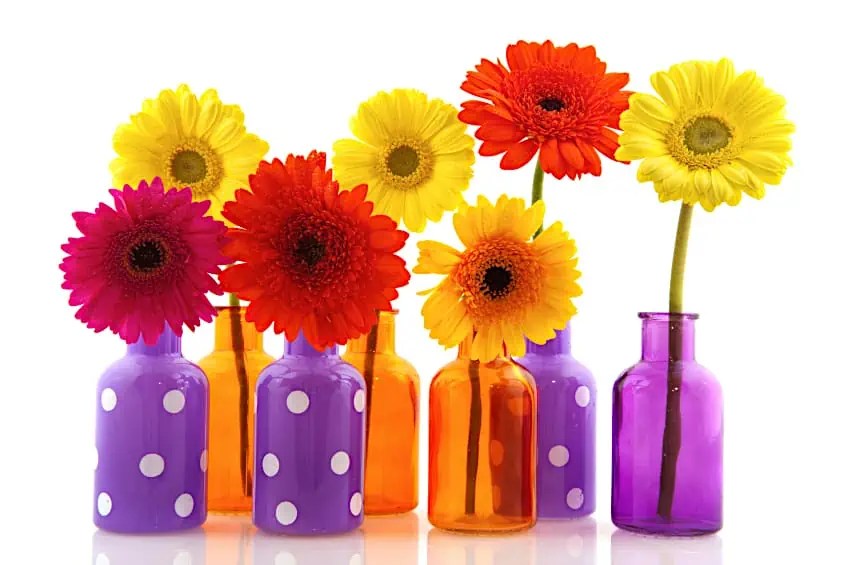
Stencil Designs
Stencil stickers are sold at pretty much every craft store, and they are perfectly capable of sticking to your glass vase. To use a stencil, simply stick it onto your glass, and apply paint inside the negative space using a dabbing motion with your paintbrush.
To ensure your paint does not go running all over when you remove the stencil, you can cure your paint by placing the vase in the oven at 370 degrees Fahrenheit for 30 minutes.
Don’t preheat your oven, simply put your vase in and then set the heat and timer. Once the 30 minutes have elapsed, allow the oven to cool with the vase inside it for another 30 minutes, and then remove your freshly stenciled vase. Before attempting this, ensure your glass is capable of withstanding this amount of heat, and do not remove your vase prematurely.
Freehand Painting
Whether you are looking to set your decorative pieces apart, or just want a fun activity for little ones, freehand paint designs are always a great option. The nice part about freehand designs is that your options are limitless, and they give you the freedom to make completely unique designs that are sure to be conversation starters.

Freehand painting is done with a brush and acrylic or enamel paint. Be sure to apply multiple coats over your design, and feel free to oven-bake your design to ensure it lasts using the method we mentioned above.
Freehand painting is easy, and you won’t have the pressure of replicating another design or getting a stencil shape just right.
Finishing Touches for Vase Painting
If you are looking for some cool ideas for finishing touches, consider adding accents in the form of little handmade decorations, working different colors into the painted areas in the way of color blocking, or adding stickers to the painted surface.
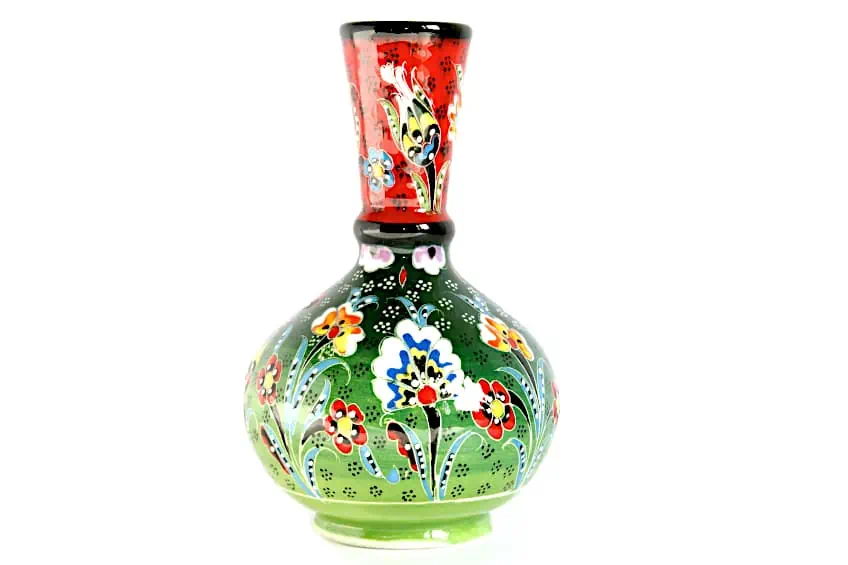
You could also try painting the inside of your glass vase if you really want to set it apart. Simply pour some paint into the vase and then pop in your paintbrush to lather the paint up the side of the vase. Repeat this process until the entirety of the vases interior has been painted and then allow it to dry as you did with the outside. This is an easy way to add an extra aesthetic dimension to your workpiece.
That’s all you need to know about how to paint glass vases. Remember that the key to painting any glass surface is to prepare it well and use a paint that is graded for use on glass. Pretty much any glass vase can be painted, but it’s far easier to paint clear glass compared to other types, so it’s best to stick to the clear stuff to achieve the best results.
Frequently Asked Questions
What Can Be Used to Decorate Glass Vases?
There are many glass vase painting ideas to choose from. You can decorate your vase using spray paint, jar paint, stencils, heat treatment, and even glass markers! Your vase decorations are only limited by your time and imagination.
Can You Spray Paint Glass Vases?
Yes! Spray painting glass vases is entirely possible and can be done with acrylic paint, enamel paint, and glass-specific paints. Can you spray paint glass vases using a sprayer too? You can, but we recommend using a low-pressure sprayer.
Can You Paint Ceramic Vases?
Wondering how to paint a ceramic vase? These vases can be painted using epoxy-based paints. The actual method regarding how to paint a ceramic vase involves simply cleaning the vase and then applying your epoxy-based paint, preferably with a sprayer.
In 2005, Charlene completed her wellness degrees in therapeutic aromatherapy and reflexology at the International School of Reflexology and Meridian Therapy. She worked for a company offering corporate wellness programs for several years before opening her own therapy practice. In 2015, she was asked by a digital marketer friend to join her company as a content creator, and it was here that she discovered her enthusiasm for writing. Since entering the world of content creation, she has gained a lot of experience over the years writing about various topics such as beauty, health, wellness, travel, crafting, and much more. Due to various circumstances, she had to give up her therapy practice and now works as a freelance writer. Since she is a very creative person and as a balance to writing likes to be active in various areas of art and crafts, the activity at acrylgiessen.com is perfect for her to contribute their knowledge and experience in various creative topics.
Learn more about Charlene Lewis and about us.
